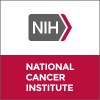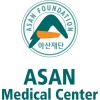
Mechanism of Action of Galiximab in Subjects With Previously Untreated Follicular Non-Hodgkin's...
LymphomaNon-Hodgkin'sThe purpose of the study is to evaluate the mechanism(s) of action of galiximab in subjects with previously untreated follicular NHL.

Everolimus and Bortezomib in Treating Patients With Relapsed or Refractory Lymphoma
714leukemiaLymphomaRATIONALE: Everolimus and bortezomib may stop the growth of cancer cells by blocking some of the enzymes needed for cell growth. PURPOSE: This phase I trial is studying the side effects and best dose of everolimus when given together with bortezomib in treating patients with relapsed or refractory lymphoma.

Study of Pegylated Interferon-Alfa 2b in Combination With PUVA Therapy In CTCL
LymphomaRATIONALE: PEG-interferon alfa-2b may interfere with the growth of cancer cells and slow the growth of mycosis fungoides/Sezary syndrome. Ultraviolet light therapy uses a drug, such as psoralen, that is absorbed by cancer cells. The drug becomes active when it is exposed to ultraviolet light. When the drug is active, cancer cells are killed. Giving PEG-interferon alfa-2b together with ultraviolet light therapy may kill more cancer cell. PURPOSE: This is a pilot study of dose-escalating pegylated IFN-α-2b and PUVA or NB-UVB. The purpose is to study the side effects and best dose of PEG-interferon alfa-2b to be given together with ultraviolet light therapy in patients with stage IB, stage II, stage III, or stage IVA mycosis fungoides/Sezary syndrome (CTCL).

Avastin (Bevacizumab) Plus Adriamycin, Bleomycin, Vinblastine and Dacarbazine (ABVD) for Advanced...
Hodgkin LymphomaThe purpose of this research study is to determine the effectiveness and safety of Avastin when combined with standard chemotherapy for Hodgkin lymphoma. Avastin works differently than standard chemotherapy drugs. It is a type of protein called an antibody which binds to a substance called VEGF(Vascular Endothelial Growth Factor). VEGF stimulates the growth of the blood vessels that feed tumors and encourages tumor cell growth. VEGF is produced in excess by Hodgkin lymphoma cells, and is associated with a poorer outcome in patients with Hodgkin lymphoma. When the activity of VEGF is interrupted in multiple other cancer types, the blood vessels around the tumor cells die resulting in less nutrient delivery and death to the tumor. Blocking of VEGF has also been shown to improve delivery of chemotherapy to cancer cells, making standard chemotherapy work better. This trial uses Avastin in combination with standard chemotherapy with the goal of improving the cure rate over chemotherapy alone.

Non-Myeloablative Allogeneic HSCT From HLA Matched Related or Unrelated Donors for the Treatment...
Multiple MyelomaCLL / SLL3 moreA non-myeloablative treatment strategy and uniform selection criteria will enable patients with a variety of low grade B-Cell malignancies to attain long term disease control without unacceptably high treatment related mortality.

A Drug Interaction Study of Tasisulam in Patients With Advanced Cancer or Lymphoma
LymphomaAdvanced CancerThe purpose of this study was to assess the effect of tasisulam as an inhibitor of CYP2C9, using tolbutamide as a probe substrate. This study was to have 3 treatment periods, and continued access in an extension period. Period 1 is 4 days in length. Periods 2 and 3 are each approximately 28 days in length. Due to the early termination of the trial, only 1 Period 3 participant enrolled in the extension period before study termination.

FR901228 in Treating Patients With Relapsed or Refractory Non-Hodgkin's Lymphoma
Recurrent Adult Diffuse Large Cell LymphomaRecurrent Mantle Cell LymphomaFR901228 may stop the growth of cancer cells by blocking some of the enzymes needed for cell to grow and by blocking blood flow to the cancer. This phase II trial is studying how well FR901228 works in treating patients with relapsed or refractory non-Hodgkin's lymphoma.

Retreatment Study of Galiximab + Rituximab in Follicular Non-Hodgkin's Lymphoma (NHL)
LymphomaNon-Hodgkin'sThis is a Phase III, multicenter, global, open-label, single-arm, retreatment study of an investigational drug called galiximab in combination with an approved drug called rituximab in subjects with relapsed or refractory, follicular NHL who demonstrated a response on Study 114-NH-301 with a time-to-progression >=6 months.

Donor Umbilical Cord Blood Transplant By Injection Into the Bone Marrow in Treating Patients With...
Myeloproliferative DisordersLeukemia2 moreRationale: Giving chemotherapy and total-body irradiation before a donor umbilical cord blood transplant helps stop the growth of cancer and abnormal cells and helps stop the patient's immune system from rejecting the donor's stem cells. When the healthy stem cells from the donor's umbilical cord blood are injected into the patient's bone marrow they may help make stem cells, red blood cells, white blood cells, and platelets. Purpose: This phase I/II trial is studying the side effects of donor umbilical cord blood transplant when given directly into the bone marrow and to see how well it works in treating patients with hematologic cancer.

Gemcitabine for Marginal Zone Lymphoma
Non-Hodgkin's LymphomaMarginal Zone LymphomaMarginal zone lymphoma, one of the indolent lymphoma, is believed to be incurable with chemotherapy. Thus the investigators need a novel agent for marginal zone lymphoma. Gemcitabine has been tried as one of salvage chemotherapy regimen and has been shown to have anti-lymphoma activity. To the investigators' knowledge, there has been no trial of gemcitabine for marginal zone lymphoma. Thus the investigators made a plan to investigate the role of gemcitabine in marginal zone lymphoma.
